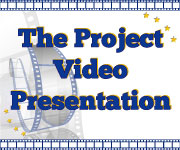basic information
THE INITIATIVE PROMOTER’S PERSPECTIVE
The project participants were the Vocational College of Nurmes, local tourist companies and organizations, and Russian training institutions and companies. The project actors had also contacts with actors in Sweden, Germany, Estonia and Norway.
The first activities of the project were English and Russian language training which were chosen according to the results of a language training needs analysis target at the companies. The aim was to adapt the methods to other language training, which was carried out successfully (French, German, Swedish and Slovakian). The project was piloted as part of a bigger “Virtaa firmaan”-project in North Carelia, which helped very much when planning the next steps for the project.
- To create a functional model of language and intercultural learning / teaching to be used with the traditional classroom teaching
- To integrate the model into the training institution’s curriculum and to disseminate the method also to other training institutions in the region
- To make a production of the models, methods and processes developed in the project and to disseminate them to other training organizations all over Finland
In the beginning the project activities were carried out by arranging language bath sessions in Russia and Finland.The employees had the opportunity to work in a company abroad, to learn more about the language and the culture, and especially use the target language as a working tool in an authentic environment.
Another method used in this project was to integrate it into the practical work environement that was already ongoin in the training institution. The practical work environment can take the role of an international operational environment or it could be used for practising vocational language use situations which the students were confronted to in the cooperation with the companies or during the on-the job-periods abroad.
A metohod of Language skills by immersions was created in the project. The method had an impact on developing new approaches for teaching and learning languages and foreign cultures, as well as recognizing language skills, in new sectors and for other languages in real working life situations and in various parts of business.
The method was presented in a publication of the Finnish National Board of Education (edited by Tarja Frisk) in 2010 (Oppimisympäristöjä avartamassa Oivalluksia, ideoita ja esimerkkejä oppimisympäristöiksi ammatillisessa koulutuksessa). The Finnish version is available as a pdf version in the internet.
More information: https://sites.google.com/site/kylpemallakielitaitoa/
The Nellip project is the first one to contact us about the project results and impact, and we see it a very good way of exploring the projects'outcomes and achievements.
The project planning will be successful only if it has the full support and understanding of the training institution’s direction. Also concrete resources ( i.e. time and money) dedicated to the project are needed. It is an extra “plus” if you can find an enthusiastic team of teachers to work on the project work inside the training organization. Planning takes also hours after the working days and therefore needs interest, willing and readiness to put also hours after the working day on the work. However, it is recommended to put some time on finding the right persons who really are devoted on the development work. It is also wise to remind about the needs for resources. There should be funding from outside the training organization (e.g. The Finnish Nation al Board of Education) and the project work should be well organized. There is a need for help for those working on the applications, and this concerns also the small-sized projects.
Language projects are very welcome to the vocational training.
THE NELLIP NETWORK’S PERSPECTIVE
Intercultural dialogue
Cooperation with working life
Variety of languages on offer
THE NATIONAL AGENCY’S PERSPECTIVE
The project offers the methods of language bath and functional learning for vocational training in a large multicultural networks. It has regional significance. Language learning is promoted by functional learning methods and in practical environments.
One of the strenghs is the support for learning that is based in individual needs. Cooperation with the working life is based on the learners' needs. The project combines language skills, vocational skills and interaction between young people and adults.
Comments on this Case Studies
